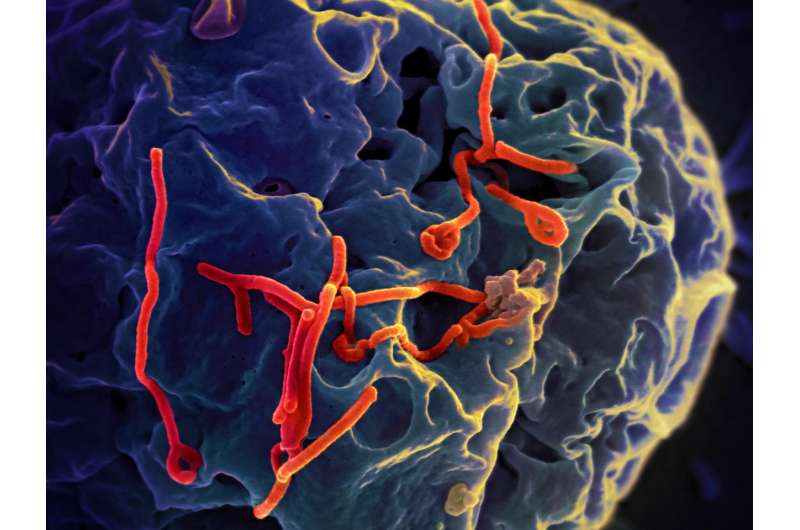Texas Biomed scientists researching Ebola-malaria connection

Ebola virus is a continuing threat in Central and West Africa, with an outbreak currently taking place in the Democratic Republic of Congo. The disease kills up to 90% of the people who get infected, and more than 150 people have died from Ebola so far this year. The factors that determine who is susceptible to Ebola infection and who is not are still a mystery.
Texas Biomed researchers—in collaboration with the University of Iowa—are trying to find out how malarial infections impact people exposed to Ebola virus. Both diseases are endemic in that region. "A significant number of people entering Ebola Virus Treatment Units during the 2014-2016 West African outbreak were infected with both the malarial parasites, Plasmodium falciparium, and Ebola virus. Our studies will assess these infections in an animal model to understand the molecular impact of malarial infection on the consequences of Ebola virus infections," explained Professor Wendy Maury, Ph.D., the lead investigator at the University of Iowa.
"It has been postulated for some time now that malaria and Ebola virus co-infection has an effect on the outcome of Ebola virus disease," Staff Scientist Olena Shtanko, Ph.D., said. "This is a really fascinating study which started in our lab this month."
As part of a National Institutes of Health grant, Dr. Shtanko will be taking malaria-infected mice into the Biosafety Level 4 (BSL4) laboratory and challenging them with Ebola virus. The BSL4 lab is the highest safety rating for a biocontainment laboratory in order to house infectious agents for which there is no vaccine or cure.
The hypothesis of the Ebola-malaria connection under testing is that people with an acute (active and recent) malarial infection, where the immune response of the body is already ramped up, have a greater chance of surviving filovirus infection. If people have been infected with malaria but the infection is chronic, then they are more susceptible to Ebola.
Dr. Shtanko will begin with taking macrophages (large white blood cells that are part of the immune system) from infected mice and studying them to determine what role they may play in dual malaria/filovirus infection. From there, she will begin testing with the mice.
Knowing if this assertion is true might change how doctors design therapies for Ebola virus disease in areas where both diseases are present, perhaps paving the way for more tailored therapeutics. "It's an area that needs to be addressed," Shtanko stressed.
Other co-infections are known to impact each other's outcome. For example, patients infected with HIV-1, a virus that causes AIDS, are more susceptible to tuberculosis infection.
Texas Biomed's part in the "Mechanisms and consequences of Plasmodium/Ebola virus co-infections" study will be taking place over two years. The next step may involve testing in a higher-level animal model, such as nonhuman primates.



















